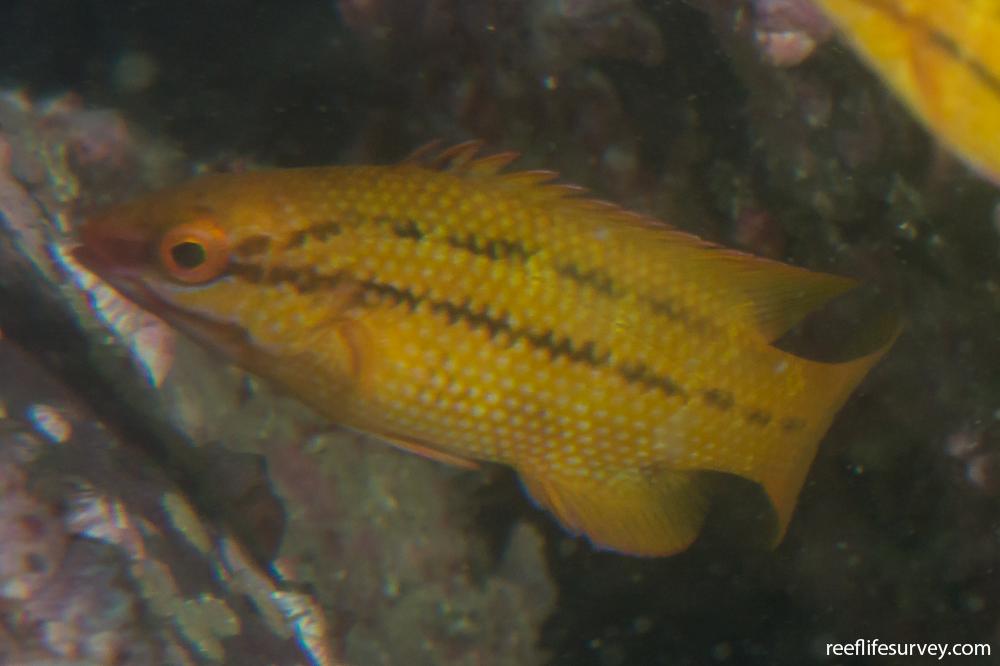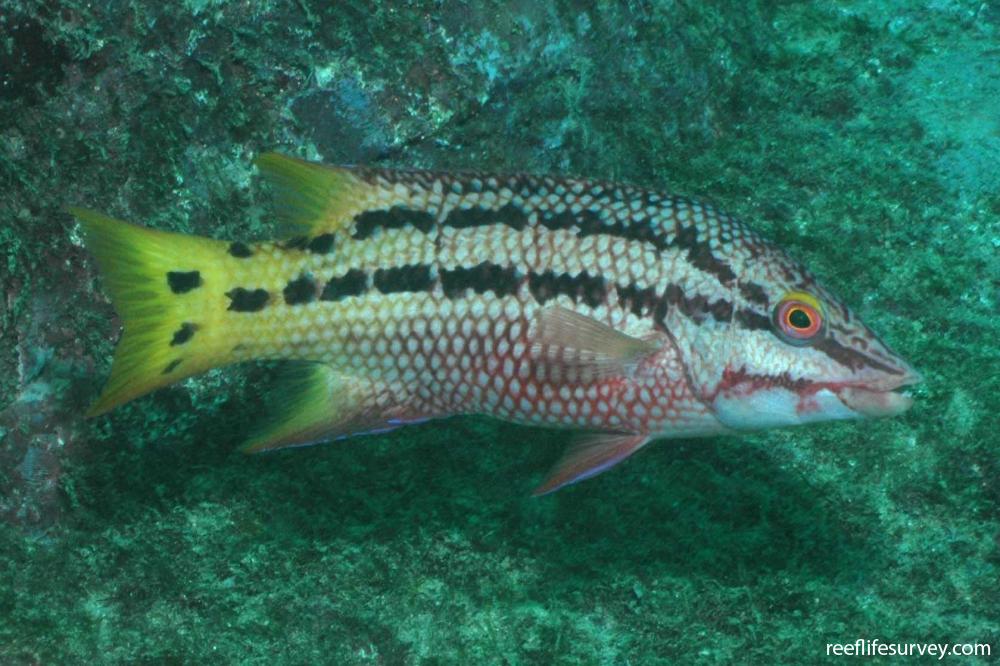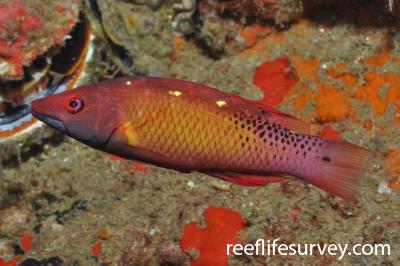Bodianus diplotaenia
Mexican hogfish | Streamer HogfishSimilar Species
Same Genus
Distribution
Tropical Eastern Pacific
Description
Males with a large bump on forehead, between eyes, long filaments on trailing tips of dorsal, anal and tail fins, and a vertical yellow bar on mid body, fading in large individuals. Females reddish brown with two dark, often broken lines along body, a yellow tail and a pointed snout. Juveniles similar to females but more yellow base colour. All individuals start life as females, with some individuals converting to males later in life.
Information
Max Size: 76 cm
Sea Temperature Range: 20.8-30.2°C
Depth: 5-76m
Habitat Generalization Index: 30.98
Also referred to as the SGI (Species Generalisation Index), this describes the habitat niche breadth of the species. Species with values less than 15 are found in a relatively narrow range of reef habitat types (specialists), while those over 25 may be found on most hard substrates within their range (generalists). Learn more here.
Conservation and Rarity
IUCN Status: Least Concern
Occurrence: Widespread (58.8% of sites)
Occurrence describes how often the species is found on surveys within its distribution. It is calculated as the % of reef sites surveyed by RLS divers across all the ecoregions in which the species has been observed
Abundance: Many (17 per transect)
Abundance is calculated as the average number of individuals recorded per RLS transect, where present.
Edit by: Joe Shields



























